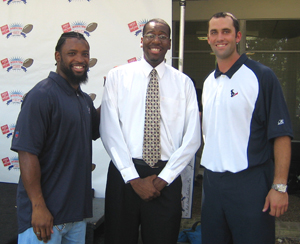Have disability, will travel
by Beth Finke
A quick note from your Easter Seals autism blog moderator –Â just want to let you know I’ll be away from the blog for a week. A friend is marrying a woman from Poland, and my husband and I are flying to Warsaw for the wedding.
I’m feeling less anxious about this trip than I have in previous ones — probably because this time we won’t have to find a caregiver for Gus while we’re away. Our son, Gus, was born with severe mental and physical disabilities. He is 21 now, uses a wheelchair to get around, and lives in a wonderful group home. When he still lived with us, he would either travel along on vacations or we’d find a babysitter qualified enough to take care of him.
I honestly can’t tell you which was the easier route.
Those of you with children who have autism or other disabilities know what it’s like to plan a family vacation –Â you take a deep breath, pack up all the prescriptions and medical equipment, cross your fingers and pray to the travel gods that nothing remarkable happens, and there are no “incidents.”
There can be wonderful rewards, of course: I’ll never forget our beach vacations, Gus sitting on the deck, hand held high up in the air, spreading his fingers to feel the ocean breeze.
Simple pleasures.
I am looking forward to enjoying my own simple pleasures during this trip to Poland and have been unusually casual about preparing for it. I am leaving my Seeing Eye dog with friends, and to be honest, without having to pack for Gus or Hanni, the trip seems like a cinch.
For a first-hand look at what it is like to travel with a disability, I highly recommend Bridget Houlihan’s Wheels with a View blog. Houlihan has a long history with Easter Seals — she spent her first summer at Easter Seals Colorado Rocky Mountain Village camp when she was 9 and ended up serving as a counselor there in her teens. Houlihan says the self-confidence she gained at camp, doing things that kids with disabilities weren’t supposed to do, is an important part of who she is today.Â
Houlihan was born with cerebral palsy. Now in her mid-20s, she’s among the first generation of kids with disabilities to attend neighborhood schools and go on to college. She was among the first Rotary International Scholarship students with disabilities, studying for a master’s in media, which she received in August 2001.
Her blog is a journal of trips to New York City, Las Vegas and Wrigley Field rooftop decks –Â this woman has a sense of adventure!
As do I.
I’m looking forward to my week away. I’ll be leaving you in the VERY capable hands of Danny Yuen, a Technology Opportunities Program (TOP) intern here at Easter Seals Headquarters.
More on the TOP grant in a future blog. For now, I’m off to O’Hare.







 The icing on the cake was the Houston Texans players –Â
The icing on the cake was the Houston Texans players –Â 